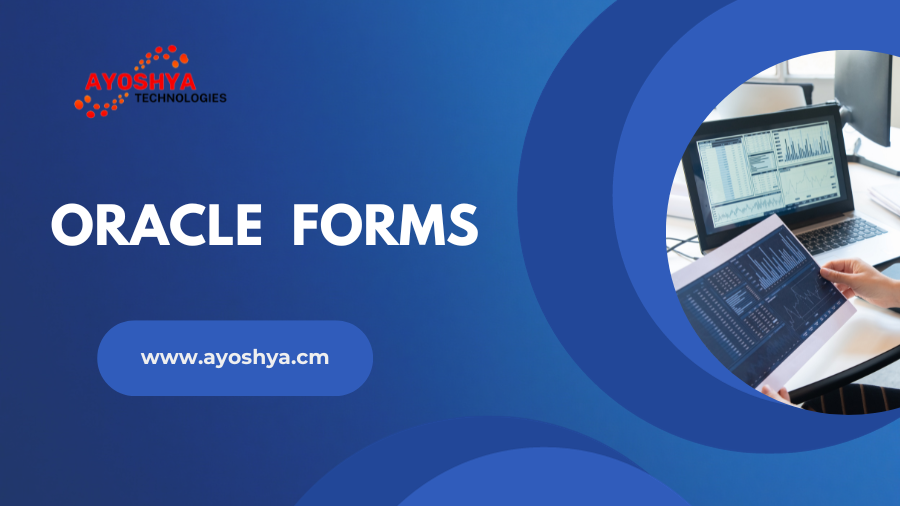Magic of Oracle Forms: A Comprehensive Guide
I. Introduction
A. Evolution of Application Development
The landscape of application development has undergone significant transformations, with Oracle Forms emerging as a key player in simplifying and accelerating the development process.
B. The Role of Oracle Forms in Modern Development
It plays a crucial role in modern application development by providing developers with a powerful and versatile platform for creating robust, data-driven applications.
II. Understanding Oracle Forms
A. Overview and Core Features
It is a comprehensive development tool that allows developers to create sophisticated and interactive forms, simplifying the process of building database applications.
B. How Oracle Forms Streamlines Development
Unlike traditional coding, Orcle Forms streamlines development by offering a visual and declarative approach, reducing the need for extensive manual coding.
C. Advantages Over Alternative Solutions
Explore the advantages of Forms over alternative development solutions, including faster development cycles, enhanced maintainability, and seamless integration with Oracle databases.
III. Getting Started with Oracle Forms
A. Installation and Setup
Get started with Forms by understanding the installation process and setting up your development environment for a smooth workflow.
B. Building Your First Form
Walkthrough the process of creating your first form in Forms, exploring the basic elements and functionalities.
C. Navigating the Oracle Forms Interface
Familiarize yourself with the Forms interface, understanding the layout and tools available for designing intuitive user interfaces.
IV. Key Components of Oracle Forms
A. Forms Designer
Delve into the Forms Designer, the central hub for creating and modifying forms, and understand its key features.
B. Data Blocks and Items
Explore the concepts of data blocks and items, essential building blocks for creating dynamic and data-driven forms.
C. Triggers: Unleashing Functionality
Learn how triggers in Forms can be leveraged to add powerful functionality and responsiveness to your forms.
V. Oracle Forms in Action
A. Creating Data-Driven Forms
Discover how Forms facilitates the creation of data-driven forms, allowing developers to connect seamlessly with Oracle databases.
B. Integrating Business Logic
Explore the integration of business logic into Forms, enabling developers to implement complex processes without extensive coding.
C. Designing Intuitive User Interfaces
Master the art of designing intuitive and user-friendly interfaces in Forms, enhancing the overall user experience.
VI. Enhancing User Experience
A. Implementing Validation and Error Handling
Understand the importance of validation and error handling in Forms, ensuring data integrity and a smooth user experience.
B. Utilizing Templates and Themes
Learn how to use templates and themes to maintain consistency across forms and create visually appealing interfaces.
C. Best Practices for User-Friendly Forms
Explore best practices for designing user-friendly forms, optimizing layouts, and improving overall usability.
VII. Oracle Forms Deployment Options
A. On-Premise Deployment
Explore on-premise deployment options for Forms, providing control and security for organizations with specific infrastructure requirements.
B. Integration with Oracle Cloud
Understand how Forms seamlessly integrates with the Oracle Cloud, offering scalability, accessibility, and the benefits of cloud infrastructure.
C. Hybrid Approaches for Flexibility
Consider hybrid deployment approaches that combine on-premise and cloud solutions, providing flexibility to adapt to changing business needs.
VIII. Security Considerations
A. Data Security Measures
Delve into the data security measures provided by Forms, including encryption and secure communication with Oracle databases.
B. Access Control and User Permissions
Explore the robust access control features of Forms, ensuring that sensitive data is accessible only to authorized users.
C. Forms and Compliance Standards
Understand how Forms aligns with compliance standards, making it a secure choice for organizations operating in regulated industries.
IX. Optimizing Performance
A. Performance Tuning Strategies
Optimize the performance of Forms applications by implementing tuning strategies, ensuring optimal responsiveness and efficiency.
B. Common Pitfalls and How to Avoid Them
Identify common pitfalls in Forms development and learn how to avoid them, preventing issues that may impact performance.
C. Scaling Oracle Forms for Large Projects
Explore strategies for scaling Forms applications to meet the demands of large and complex projects, ensuring stability and reliability.
X. Future Trends and Updates
A. Forms in the Era of Low-Code Development
Explore the evolving role of Forms in the era of low-code development, empowering users with diverse skill sets to contribute to application development.
B. Integration with Emerging Technologies
Understand how Forms is integrating with emerging technologies, such as artificial intelligence and machine learning, to enhance functionality and intelligence.
C. Oracle’s Roadmap for Forms
Get insights into Oracle’s roadmap for Forms, understanding the planned updates and features that will shape the future of this powerful development tool.
XI. Conclusion
A. Forms: Empowering Developers and Businesses
Summarize the key takeaways, emphasizing how Forms empowers developers to create robust applications while providing businesses with the agility to meet evolving demands.
B. Embracing the Future of Application Development
Encourage readers to embrace the future of application development by leveraging the capabilities of Forms, acknowledging its pivotal role in shaping the landscape.
XII. FAQs
A. How does Oracle Forms differ from other application development tools?
Oracle Forms differentiates itself by offering a visual and declarative approach, streamlining development and reducing the need for extensive manual coding.
B. Can Forms handle complex data-driven applications?
Yes, Oracle Forms excels in handling complex data-driven applications, providing a versatile platform for creating sophisticated forms connected to Oracle databases.
C. Is Forms suitable for small businesses?
While designed for enterprise-level performance, Oracle Forms can be adapted for small businesses, offering scalability as their operations grow.
D. What security features does Forms offer?
Forms provides robust security features, including data encryption, access controls, and adherence to compliance standards, ensuring the protection of sensitive data.
E. How does Forms align with Oracle’s broader cloud strategy?
Forms seamlessly aligns with Oracle’s broader cloud strategy by offering deployment options on-premise and in the Oracle Cloud, providing flexibility and scalability.
You may like this:
SAP & Oracle Consulting: A Winning Combination



